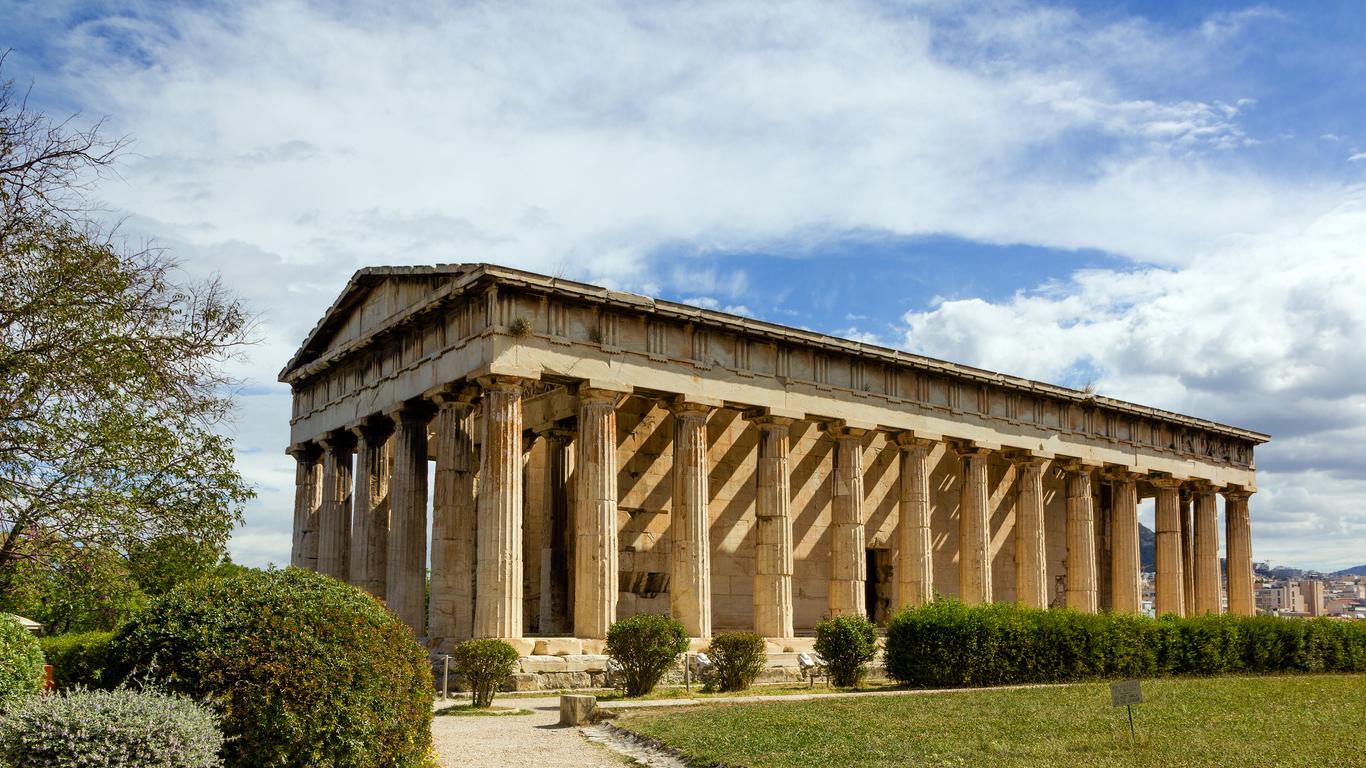The well-preserved Temple of Hephaestus, or Hephaisteion, looks over some of Athens’ more modern corners, standing at the western edge of the city’s ancient Agora. Since its construction in 450 B.C., the temple has defined its surrounding neighbourhood.
Hephaestus was the patron god of fire, metalworking, and craftsmanship. It is fitting, therefore, that his temple was erected in a neighbourhood popular with artisans and craftsmen of the day. Many metalworkers and potters kept their studios in this area near the Agora of Athens. The temple was part of a massive effort on the part of Pericles to make Athens the ultimate power of Greece. Prior to this, Athenians prided themselves on leaving temples in ruins to remind them of the Persian invasion.
The nearest Metro station is Thissio, named for this very temple as it was once called the Theseion, based on the assumption it housed the remains of Greek hero Theseus. Thissio, and the next closest Metro station, Monastiraki, are both on the green M3 line.
The Temple of Hephaestus has been a lucky remnant of ancient Athens. Instead of being destroyed by fire or invading forces, it changed with the times. Over its countless centuries of history, the Hephaisteion has served as a Christian church, an Ottoman museum, and a burial site for non-Orthodox Europeans.





